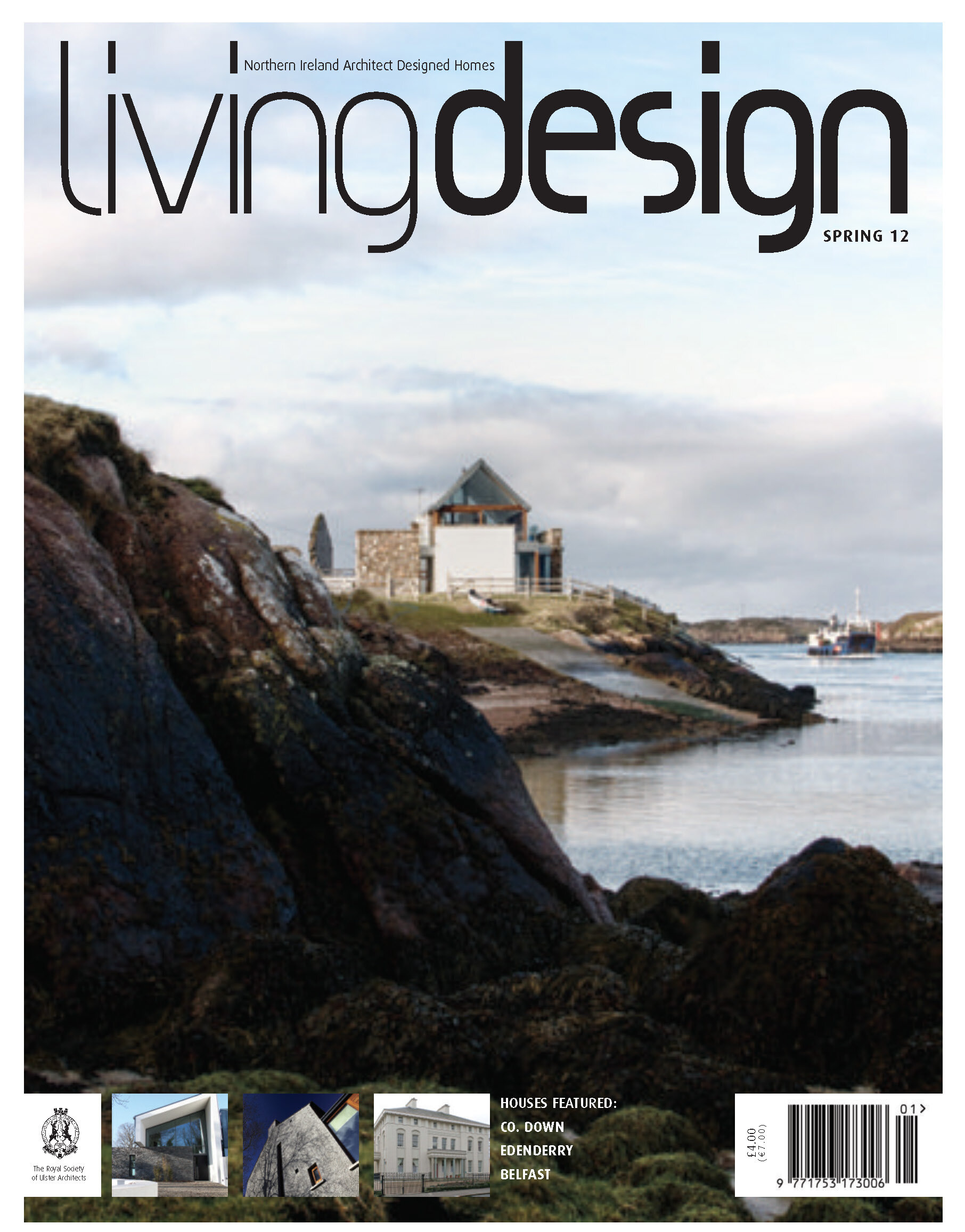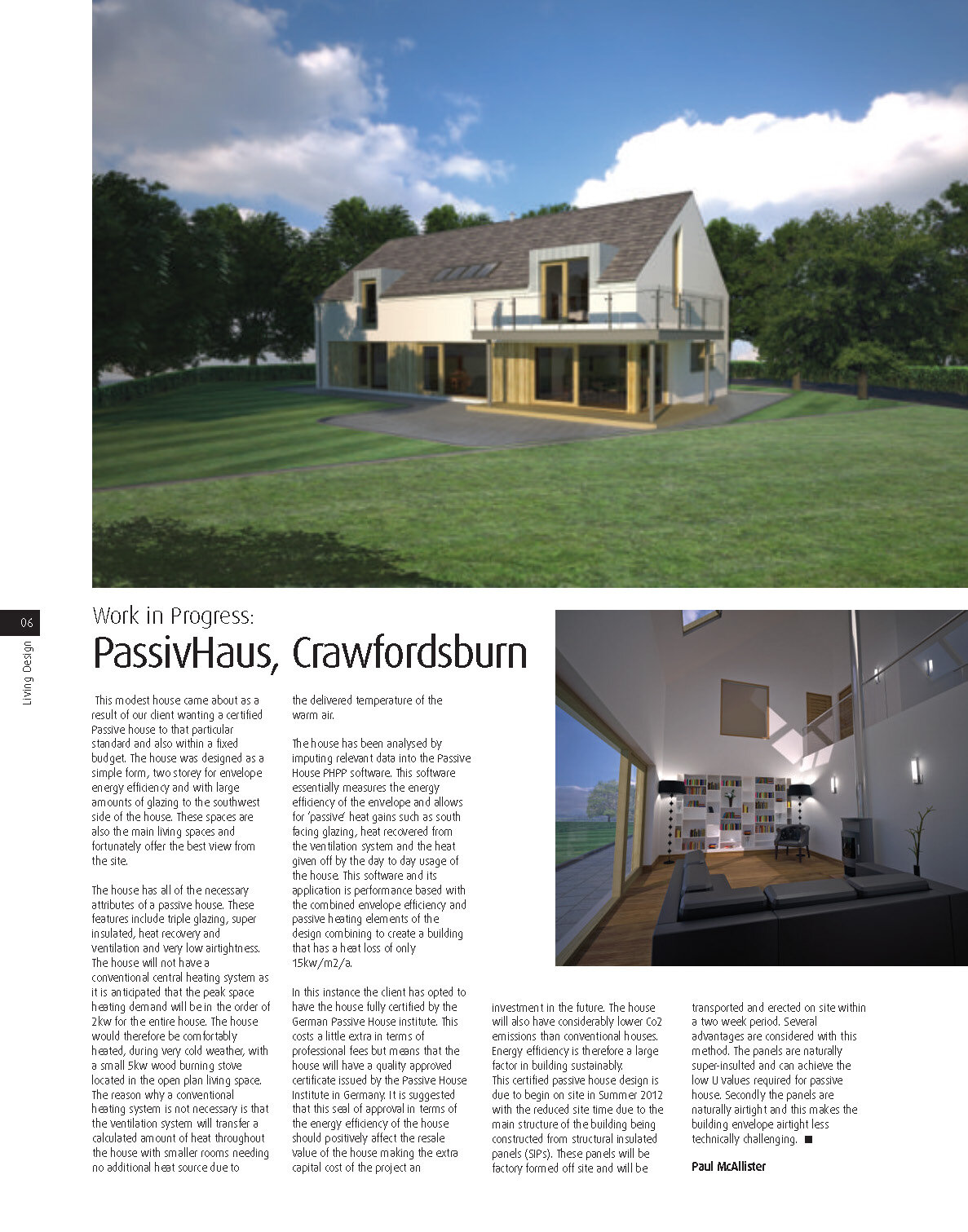Living Design - Spring 2012


This modest house came about as a result of our client wanting a certified Passive house to that particular standard and also within a fixed budget. The house was designed as a simple form, two storey for envelope energy efficiency and with large amounts of glazing to the southwest side of the house. These spaces are also the main living spaces and fortunately offer the best view from the site.
The house has all of the necessary attributes of a passive house. These features include triple glazing, super insulated, heat recovery and ventilation and very low airtightness. The house will not have a conventional central heating system as it is anticipated that the peak space heating demand will be in the order of 2kw for the entire house. The house would therefore be comfortably heated, during very cold weather, with a small 5kw wood burning stove located in the open plan living space. The reason why a conventional heating system is not necessary is that the ventilation system will transfer a calculated amount of heat throughout the house with smaller rooms needing no additional heat source due to the delivered temperature of the warm air.
The house has been analysed by imputing relevant data into the Passive House PHPP software. This software essentially measures the energy efficiency of the envelope and allows for ‘passive’ heat gains such as south facing glazing, heat recovered from the ventilation system and the heat given off by the day to day usage of the house. This software and its application is performance based with the combined envelope efficiency and passive heating elements of the design combining to create a building that has a heat loss of only 15kw/m2/a.
In this instance the client has opted to have the house fully certified by the German Passive House institute. This costs a little extra in terms of professional fees but means that the house will have a quality approved certificate issued by the Passive House Institute in Germany. It is suggested that this seal of approval in terms of the energy efficiency of the house should positively affect the resale value of the house making the extra capital cost of the project an investment in the future. The house will also have considerably lower Co2 emissions than conventional houses. Energy efficiency is therefore a large factor in building sustainably. This certified passive house design is due to begin on site in Summer 2012 with the reduced site time due to the main structure of the building being constructed from structural insulated panels (SIPs). These panels will be factory formed off site and will be transported and erected on site within a two week period. Several advantages are considered with this method. The panels are naturally super-insulted and can achieve the low U values required for passive house. Secondly the panels are naturally airtight and this makes the building envelope airtight less technically challenging.
